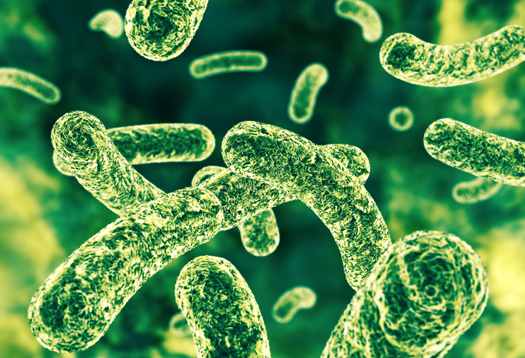
- Bloating relief starts with the right probiotic strains — L. acidophilus, B. lactis HN019, and B. lactis Bi-07 — proven to reduce gas, discomfort, and irregularity.
- Many probiotics fail because they contain dead bacteria or ineffective doses; testing your probiotic’s viability (like observing bloating after a triple dose) ensures it’s alive.
- Consistency matters: Gut relief begins in two weeks, with bloat reduction by week three, and lasting benefits at two months.
- Prebiotics — the food for probiotics — are essential for maintaining a thriving gut ecosystem.
The probiotic truth: Strains that work, and why most don’t
Walk down any supplement aisle, and you’ll find shelves lined with probiotics boasting "billions of CFUs" and "bloat relief" — but most are little more than expensive placebos. Knudsen emphasizes that potency and strain specificity are non-negotiable. "Many options deliver false promises and bacteria strains that aren’t even active," she warns. The magic trio — L. acidophilus NCFM, Bifidobacterium lactis HN019, and B. lactis Bi-07 — have been clinically shown to reduce abdominal discomfort, gas, and bloating severity. These strains don’t just survive stomach acid; they colonize the gut, crowding out bloat-causing bacteria and promoting smoother digestion. But how do you know if your probiotic is actually alive? An age-old hack: Take three capsules at once (a one-time megadose) and wait. If you feel mild bloating, congratulations — your probiotic is thriving. If not, you’ve likely been swallowing dead bacteria. Even better proof? After a few days of high doses, your stool should smell subtly sweet — like "baby poop" — signaling a healthier gut environment.The prebiotic factor: Feeding your microbiome
Probiotics alone aren’t enough. Without prebiotics — fibers that feed good bacteria — your gut’s new residents will starve. Foods like garlic, onions, asparagus, and bananas act as fertilizer for probiotics, ensuring they multiply and out-compete harmful microbes. Think of it like planting a garden: probiotics are the seeds, but prebiotics are the sunlight and water that let them flourish. Instant relief is tempting, but gut healing is a marathon — not a sprint. With consistent use, advanced probiotic+ with bloat support delivers measurable results:- Week 1-2: Gut begins resetting; mild changes in digestion.
- Week 3: Gas and bloating diminish noticeably.
- Week 4: Regularity improves; less abdominal tension.
- 2 Months: Bloat stays subdued — provided you stick with it.
These three probiotics can help you manage bloat
L. acidophilus NCFM
L. acidophilus NCFM is a well-researched probiotic strain that supports digestive health by balancing gut microbiota. It produces lactic acid, which inhibits harmful bacteria growth while promoting beneficial flora. This strain is particularly effective in reducing abdominal discomfort, bloating, and irregular bowel movements. Studies suggest it enhances lactose digestion, reducing gas and stomach upset in those with lactose intolerance. Additionally, L. acidophilus NCFM strengthens the gut barrier, preventing toxins from entering the bloodstream, which may contribute to overall gut comfort. Regular intake can improve stool consistency and promote regularity, making it beneficial for those with occasional digestive distress.Bifidobacterium lactis HN019
This clinically studied probiotic strain supports digestion by accelerating gut transit time, reducing gas production, and easing discomfort. B. lactis HN019 enhances immune function while modulating gut microbiota to foster a healthier digestive environment. Research shows it reduces bloating and abdominal distension by optimizing nutrient absorption and minimizing fermentation-related gas build-up. Additionally, it supports bowel regularity, making it helpful for those with sluggish digestion. Its ability to break down complex carbohydrates aids in smoother digestion, contributing to a flatter, more comfortable stomach.Bifidobacterium lactis Bi-07
Known for alleviating bloating severity, B. lactis Bi-07 improves gut health by balancing bacterial populations and reducing intestinal inflammation. Clinical studies highlight its effectiveness in mitigating bloating, particularly in individuals with occasional digestive imbalances. This strain boosts beneficial bacteria while suppressing gas-producing microbes, leading to reduced abdominal distension. It also supports immune function and enhances the digestion of dietary fibers, reducing fermentation-related bloating. Those experiencing post-meal discomfort or irregular digestion may benefit from incorporating B. lactis Bi-07 for sustained gut comfort and improved digestive resilience. The takeaway? Bloating isn’t a life sentence. With the right probiotic strategy — live strains, clinical doses, and prebiotic support — you can reclaim comfort, energy, and confidence in your own body. Sources include: MindBodyGreen.com Pubmed.gov Pubmed.gov Pubmed.gov“End of Slavery Summit” on BrightU: Evan Wade’s bold stand against authoritarianism
By Jacob Thomas // Share
Ginger: The ancient root of wellness and flavor
By Ava Grace // Share
Curcumin effectively reduces pain in osteoarthritis patients
By News Editors // Share
Great Barrier Reef still thrives amid climate doom narratives
By Willow Tohi // Share
Dr. Susan Blum unveils a revolutionary 3-step guide to natural recovery in “Healing Arthritis”
By Belle Carter // Share
Aging is inevitable but suffering is optional
By Lance D Johnson // Share
Former aide claims Netanyahu's first post-Oct. 7 priority was evading responsibility
By isabelle // Share
Mobility SOS: Decoding joint pain after 50 and the path to preservation
By willowt // Share
Kristi Noem declares endgame for Maduro as military pressure mounts
By jacobthomas // Share
Experts warn: Self-aware AI is a near-future desktop technology
By jacobthomas // Share
Microplastics invade reproductive organs—nature's colorful defense may be our best hope
By patricklewis // Share
The silent stressor: How marital strife is quietly damaging our hearts
By avagrace // Share











